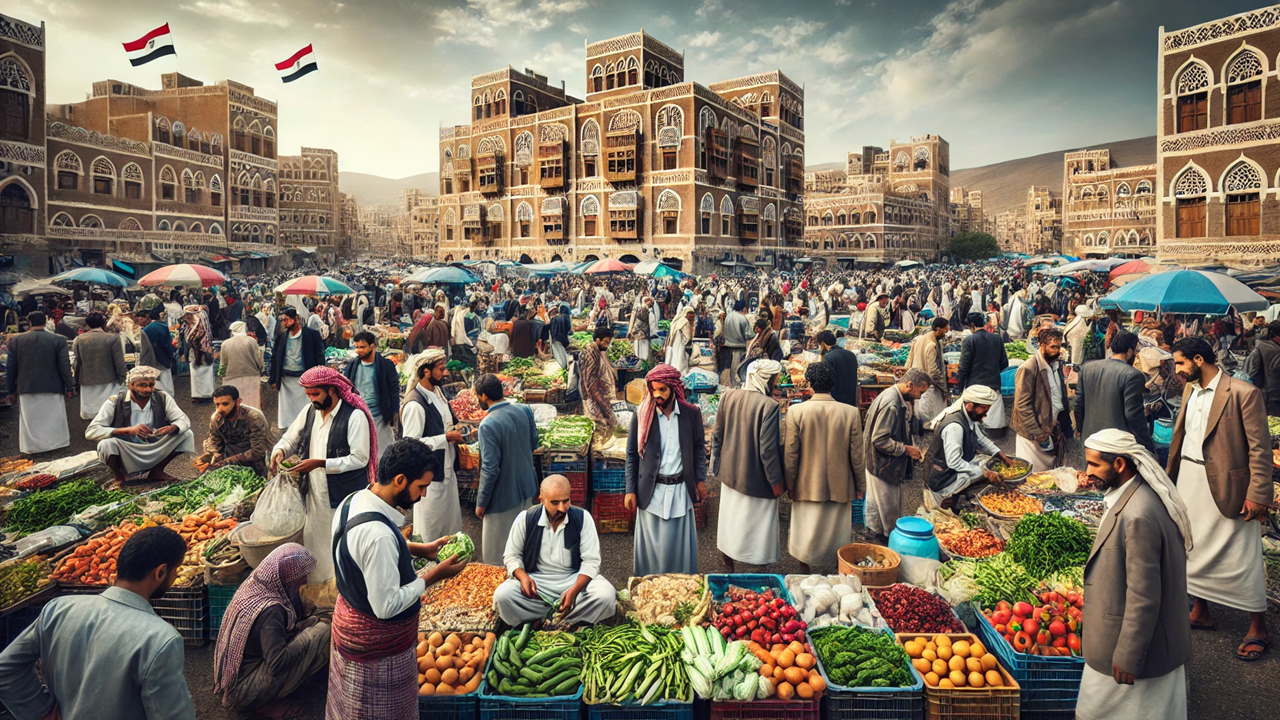Yemen’s Economic Crisis: Conflict, Fragmentation, and a Glimmer of Hope
This article highlights the findings of the Yemen Economic Monitor: Spring 2024, which examines Yemen's worsening economic and humanitarian crises. The conflict has led to severe economic fragmentation, plunging millions into poverty and food insecurity. With regional tensions escalating and the economy in decline, Yemen's future remains uncertain, though the possibility of peace offers a glimmer of hope.

Yemen’s economy is under severe strain, and its people face increasing hardship as conflict drives the country toward fragmentation. The latest report from the World Bank, Yemen Economic Monitor: Spring 2024, reveals the staggering economic and social challenges Yemen endures, exacerbated by ongoing blockades, regional tensions, and internal strife. While there are small signs of recovery, the country’s prospects remain deeply uncertain, with hopes for a lasting peace hanging in the balance.
A Fragile Economic Recovery, Disrupted
Yemen experienced a brief economic rebound in 2022, sparking hope that the country might be on a path to recovery. However, this resurgence was cut short by renewed conflict and a blockade on oil exports imposed by the Houthis. According to the World Bank report, Yemen's GDP per capita plummeted by 24% in 2023, dragging the country deeper into economic turmoil.
Yemen is now divided into two distinct economic zones: Houthi-controlled areas, where 70% of the population resides, and Internationally Recognized Government (IRG) regions that hold much of the country’s oil resources. The blockade has hit the oil sector hard, halving crude oil production, while tensions between the two zones continue to escalate, further fragmenting the economy.
The blockade, combined with ongoing regional tensions and the expiration of a UN-brokered truce in late 2022, has contributed to a significant economic contraction. The result is a severely weakened economy that relies heavily on remittances and external aid to stay afloat. While these inflows have provided some support, they are not enough to prevent the growing economic divide between Yemen’s warring regions.
Humanitarian Crisis Deepens
The ongoing conflict in Yemen is not just an economic disaster—it is a profound humanitarian crisis. With over half of the population now living in extreme poverty, many Yemenis are struggling to meet even the most basic needs, such as food and healthcare. The report paints a grim picture of a country where food insecurity is rampant, with 17.4 million people facing hunger.
Children and women are among the hardest hit. UNICEF estimates that 2.7 million children are acutely malnourished, and of these, nearly 600,000 suffer from severe acute malnutrition. The country’s already fragile healthcare system is on the verge of collapse, and education has been severely disrupted, leaving a generation of children without access to schooling.
Between 2015 and 2023, Yemen's real GDP per capita contracted by a staggering 54%, wiping out any gains made before the conflict. The country now ranks near the bottom of the Human Development Index, placing 186 out of 191 countries. As malnutrition and preventable diseases spread, the mortality rate among Yemen's youth has dramatically increased, further eroding the country’s already depleted human capital.
An Uncertain Future Amid Rising Risks
Looking ahead, Yemen’s future remains clouded by uncertainty. The World Bank report highlights several key risks that could further destabilize the country. Chief among these is the escalating conflict between Houthi-controlled and IRG-controlled areas, which threatens to deepen the divide between the two regions.
The possibility of increased economic fragmentation looms large, especially as the currency and banking systems in the two zones diverge. Houthi-controlled areas are increasingly isolated, while the IRG struggles with dwindling oil revenues and mounting fiscal challenges.
Adding to the uncertainty is the ongoing conflict in the broader Middle East, particularly in the Red Sea region. The blockade on Yemen’s oil exports, combined with regional hostilities, has already led to a sharp drop in exports and trade disruptions, which could worsen if the situation escalates.
Despite these daunting challenges, the report also offers a glimmer of hope. Though remote, the possibility of a lasting peace agreement could unlock significant recovery opportunities. If peace is achieved, Yemen could experience rapid economic growth, supported by external aid, reconstruction efforts, and post-conflict reforms. However, realizing this potential will require strong political will and the commitment of all parties involved.
A Call for Urgent Action
The Yemen Economic Monitor emphasizes the urgent need for peace and reconstruction to restore Yemen’s economy and alleviate the humanitarian crisis. Without a resolution to the conflict, Yemen’s economy will continue to fragment, and its people will face increasing hardship.
International support is critical, not only in providing humanitarian aid but also in fostering an environment where peace talks can succeed. As the conflict in the Red Sea region intensifies, the international community must act swiftly to prevent further economic and social deterioration.
Yemen's future hangs in the balance, and the road ahead is fraught with challenges. However, with the right actions and support, there is still hope that the country can rebuild and recover.
- FIRST PUBLISHED IN:
- Devdiscourse
ALSO READ
Cyclone Chido Devastates Mayotte: A Humanitarian Crisis Unfolds
Philippines and Japan Forge Military Access Pact Amid Regional Tensions
Israel's Bold Move: Doubling Population on Golan Heights Amidst Regional Tensions
Chaos in Mayotte: Cyclone Devastation Spurs Political and Humanitarian Crisis
Myanmar's Controversial Election Plans: Regional Tensions and Diplomacy










